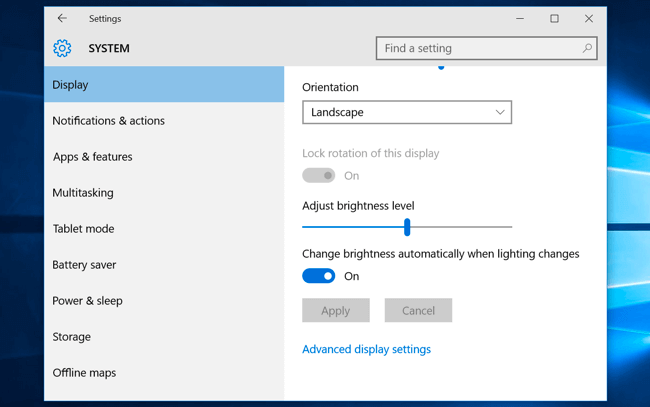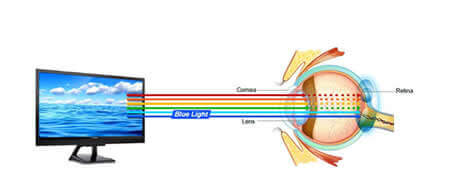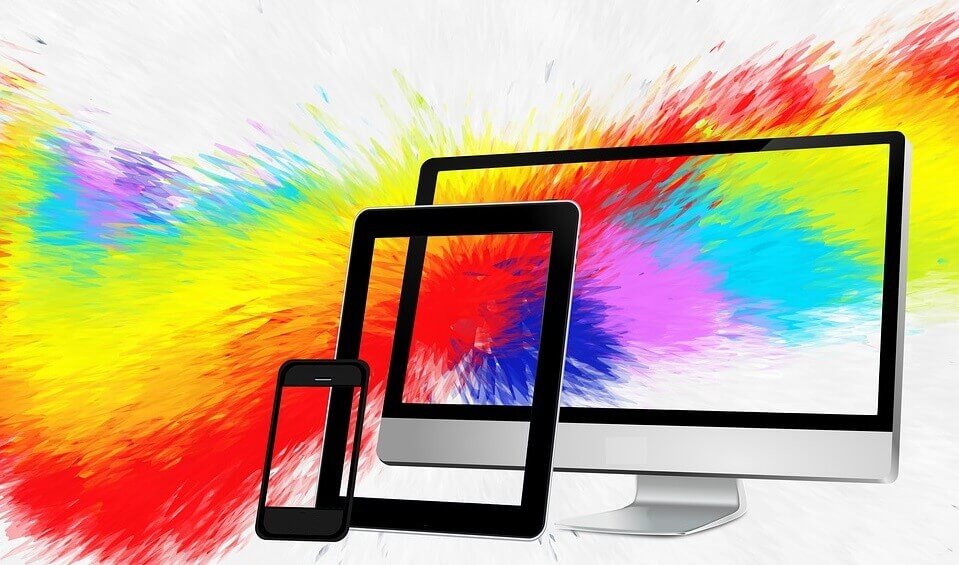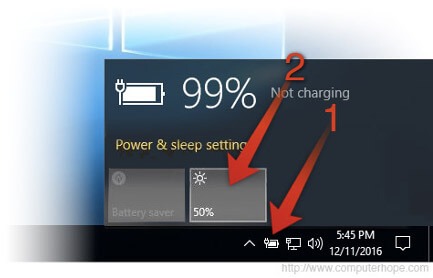Many people spend 3 to 10 hours a day on a computer. As a result, some people complain of dry eyes and fatigue.
It causes headaches and visual impairment.
Having a high-quality monitor for your computer is essential, but you also need to adjust your monitor settings to keep your eyes safe.
Today, I bring you an in-depth research-based guide on Best Monitor Settings For Eyes.
Best Monitor Settings For Eyes
Table of Contents
What causes eye strain?

Eye strain occurs when the eyes are tired a few hours after looking at the screen or reading a book. This indicates that you need to rest your eyes. Tension is not an eyesore, but it can hurt your eyes or cause headaches and other body pain. At that time, the screen surrounded us.
Everyone complains of eye fatigue. Before you dive into the right monitoring settings and solution, first look at what’s on the screen that’s causing the problem.
Screen Brightness
It may be easy to understand that the brightness of the screen is related to voltage. Low brightness and high brightness settings make the eyes tired. Low light increases eye stress. On the other hand, an overly bright screen can also cause eye fatigue.

Body and Screen Position
Good position and monitor placement are effective in reducing eye fatigue. The best way to sit is with the backrest completely on the chair. Please sit 20-20 inches from the screen. The position of the monitor should be slightly below the line of sight. This reduces direct radiation to the eye. Better monitor eye parameters. If not, you can also do it comfortably. Good position and monitor placement are effective in reducing eye fatigue.
The best way to sit is with the backrest completely on the chair. Please sit 20-20 inches from the screen. The position of the monitor should be slightly below the line of sight. This reduces direct radiation to the eye. Better monitor eye parameters. If not, you can also do it comfortably.

Glare
The reflection of light from the screen stimulates mood and eyes. The light that is directed at you causes fatigue. There are two ways to get there: buy a pre-installed anti-glare monitor or place either anti-glare protector or skin on the screen.
Also Read: Monitor Buying Guide
Flickering Display
Monitor screens use a light source to display content. The monitor must maintain the light intensity by turning the light on and off. The process sparks light.
Flickering light can cause headaches and eye fatigue. The deadline for the on/off period is the refresh rate. A higher refresh rate is better for your eyes because it reduces flickering. Currently, there are screens without flashing.

Blue Light
The structure of visible light consists of seven different colors. Blue light is one of them, one of RGB (red, green, blue), is the primary color of the screen, and is also the cause of eye fatigue, headaches and disturbances sleep patterns. Blue light from the screen mainly interferes with the production of melatonin and interferes with sleep.
We do not recommend leaving your computer permanently because of common eye problems and other pain associated with screen use. Let’s accept the reality. Whether you’re on a computer screen or a smartphone, technology is essential. However, there is a way to reduce the burden on the eyes and relax the eyes for a while.

Monitor Calibration
Monitor calibration is an adjustment of brightness, contrast, gamma values, and image quality. By adjusting your monitor, you can test the brightness and contrast to make the best setting for your eyes. Several online tools are available for this task. The best monitor atmosphere to satisfy your eyes, this calibration method has been in vogue lately.

Best Monitor Settings for ideal Brightness and Contrast to Reduce eyes Fatigue
Many people rub their eyes after use but don’t mind checking the brightness and contrast levels of the screen. The eye can only support a certain level of light. Constant light source damage the cornea and eye lens.
Also Read: best gaming monitor under 200
Adjust the correct screen brightness
The brightness of the monitor screen is an important factor in eye fatigue. However, this is not the only aspect. The lighting conditions of the room also affect the brighter light than the screen, the eyes are very stressful when illuminated the room. This is when the room is dark and the room screen looks bright.
The highest brightness level of the screen is like resonating with the lighting of the room. If the room is dark, decrease the brightness, or increase the brightness in a bright room. Iris is the software to get the job done. Automatically adjusts brightness according to the lighting of the room.
Adjust the correct screen contrast

The contrast of the screen is the ratio of black to white. To relax your eyes, it is important to set the correct contrast ratio. The human eye can best distinguish whether white appears on a black background.
Therefore, to reduce the strain on the eyes, it is necessary to increase the contrast ratio of the eyes. Avoid low-contrast color schemes because they are stressful and cause eye fatigue.
Adjust Color Temperature
 Color temperature is a term that describes light emission. Kelvin is a unit used to describe color temperature. The color temperature ranges from 1000 to 10,000 Kelvin. The ideal color temperature depends on the time of light. Predefined color temperature for 6500 Kelvin screen. It is best not to let blue light in your eyes.
Color temperature is a term that describes light emission. Kelvin is a unit used to describe color temperature. The color temperature ranges from 1000 to 10,000 Kelvin. The ideal color temperature depends on the time of light. Predefined color temperature for 6500 Kelvin screen. It is best not to let blue light in your eyes.
Reducing the color temperature reduces the emission of blue light. However, lowering the color temperature may result in more yellow or red colors being represented, which may degrade image quality. If you need to use high-quality images, increase the color temperature as needed. However, to keep blue light away from your eyes, lower the color temperature after work. This is one of the best eye monitor settings features.
The color temperature can be adjusted manually on some monitors. There is software that automatically adjusts color temperature such as flux and iris.
Adjust color and brightness according to eye satisfaction. In addition, your ears also want to hear good TV sound. These days, soundbars with TVs are very popular with people. What soundbar does on LED TVs is also interesting. Also, recently there is a tendency to use LED TVs and better audio systems. The audio system can be connected to a TV either wirelessly or wired.
Also Read: Response Time vs Refresh Rate in Monitor
Adjust monitor RGB settings
The colors displayed on the screen are either RBG (red, blue, green) or a mixture of the three. Blue light has its advantages, but it is disadvantageous for the eyes. To change the RGB settings yourself, open the graphics settings and adjust the colors. By default, each of the three colors is set to 50.
The best RGB setting for a slightly eye-friendly monitor is a setting without blue. Change the blue value to zero to reduce eye strain!
If you do not want to change the settings yourself, you can let the Iris software manage the RGB settings.
Also Read: How to Play 4k Video on PC or Mac (Ultra HD)
Rest your eyes
It is common knowledge that prolonged use of a computer is harmful to the eyes, but it makes sense to insert breaks while working at the computer. Make it a habit to look away from the screen every 20 minutes. Focus your eyes on a distant object 20 feet away for about 20 seconds.
This 20-20-20 exercise will help reduce myopic screen strain and maintain 20/20 vision. While the best atmosphere a monitor can get is good, it is also important to take physical precautions.
Choosing the right Monitor panel Type
The Type of Monitor Panel has a significant effect on image quality and eye stress. There are three types of display panels
- In-Plane Switching or IPS
- Twisted Nematic or TN
- Vertical Alignment or VA
Which Display panel to the right for the eye. IPS or VA
When it comes to gaming, TN is an ideal choice, but harmful to the eyes. IPS display panels are expensive but entertain your eyes and reduce pain. The VA screen is similar to the IPS screen and is an alternative to IPS. However, continuous use of any screen can cause eye strain.
LED or light-emitting diode monitors use light-emitting diodes as the light source. Compared to LCD monitors, LED monitors to produce sharper images and reduce electricity bills.
In addition, the LED monitor has a brightness adjustment function with dimming function to reduce eye strain. Modern LED models have built-in anti-reflective screens. However, prolonged use of LED monitors can cause eye strain.
Also Read: Best Monitor For Eye Strain
Better background colors to reduce eye strain
People have their own plus and minus points. Positive things that relax you are better for you. If you want to know the best background color to avoid eye strain, you can consider several colors. You can place valleys or green backgrounds on your wallpaper. Put some cool colors as above. In addition, you can set a cloudy background.
The blue light was considered harmful to our eyes. It has a short wavelength and contains energy. You can avoid this.
Also Read: PC Gaming vs Console Gaming
Prevent Digital Eyestrain
No, you don’t always need to turn off the screen. However, some changes in how the device is used may be eye-friendly. These tips help you to make monitors easier on the eyes?
- Make sure your computer screen is about 25 inches or the length of your arm from your face. The center of the screen should be about 10-15 degrees below the eye level.
- Use a matte screen filter to cut glare. They can be found on all types of computers, phones, and tablets.
- Follow the 20-20-20 rules. Every 20 minutes, you’ll see objects more than 20 feet away for more than 20 seconds.
- Take a long break of about 15 minutes every two hours you spend on the device.
- If you feel dry, use artificial tears to refresh your eyes.
- Try placing a humidifier in a room that uses your computer or other devices most frequently.
- Make sure the lighting in the room you are in is bright enough. You don’t want your device to be brighter than your environment.
- If you are wearing contact lenses, rest your eyes while wearing glasses.
- I take a regular eye examination. When you work on a computer, you may need to use different glasses.
Also Read: 8 Types of Computer Monitors
FAQs
How do I make my monitor easier on the eyes?
As a rule of thumb, the text should be three times the minimum size that can be read from the normal display position. Again, this normal position is 20-30 inches from the monitor. When it comes to color combinations, your eyes prefer black text on a white or slightly yellow background.
Is a brighter screen better for eyes?
Adjusting your computer’s display settings can reduce eye fatigue & strain. In general, these adjustments are beneficial. Brightness: Adjust the brightness of the screen to make it almost the same as the brightness of the surrounding workstation. … If it looks like a light source, it’s too bright.
Can low brightness affect eyes?
Maintaining the brightness of the gadget screen to more than 50% is not at risk of permanent damage, but digital eye strain, eye irritation, dry, blurred eyes.
What type of screen do you prefer?
Have you had the opportunity to have any of these?
Post your Comment/ Feedback below 🙂
